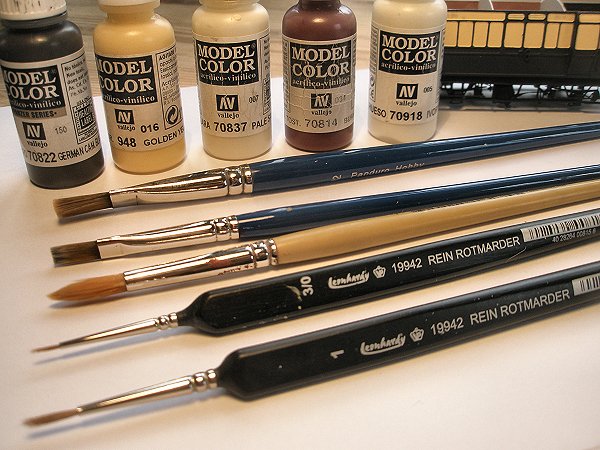My coaches are brush-painted, and I have sometimes been asked how I paint the panels. This video shows it. Be warned though that this is one of those bodged (hopefully not botched!) techniques I seem to often end up using - there are definitely more "correct" ways of doing it!
Edit: A bit more info as a supplement to the video:
In my experience, there are four key factors that effect results of this technique:
(1) Using the right paint. The Vallejo paint is very richly pigmented and dries quickly and evenly. It can therefore take the dilution while still needing only one application. Having said that, it is possible to repeat the process with a second layer if necessary, though I rarely do it. But everything must be completely dry first!
2) Getting the mix right. It has to be just "runny" enough to flow easily to the edges, but not so much that it dries up thinly. As mentioned in the video, something close to a milky substance - although perhaps a little thicker than that.
3) Good sharp edges on the moulds of the coach, which will hold and "guide" the flow of the paint. Etched brass is particularly good, but plastic like the Ratio sides has also worked well for me.
4) Good brushes - as always. The two black ones below (3/0 and 1) are the type I use in applying the paint in the video. The yellow one in the middle is a cheapo thing used for mixing the paint and water thoroughly. The blue ones are quality broad brushes (8 and 12), used for brushpainting the brown sides in several thin layers, to get smooth sides with no visible brush strokes.

-
 12
12



14 Comments
Recommended Comments
Create an account or sign in to comment
You need to be a member in order to leave a comment
Create an account
Sign up for a new account in our community. It's easy!
Register a new accountSign in
Already have an account? Sign in here.
Sign In Now